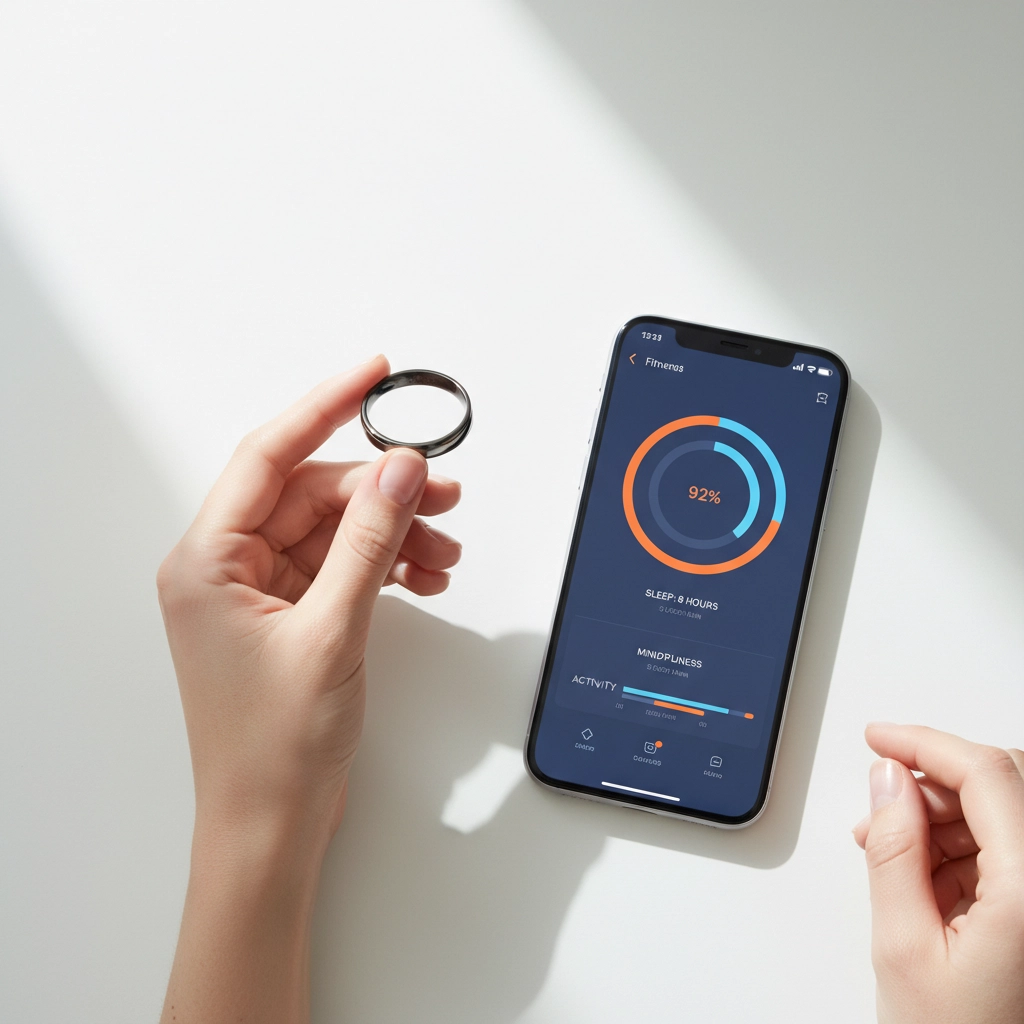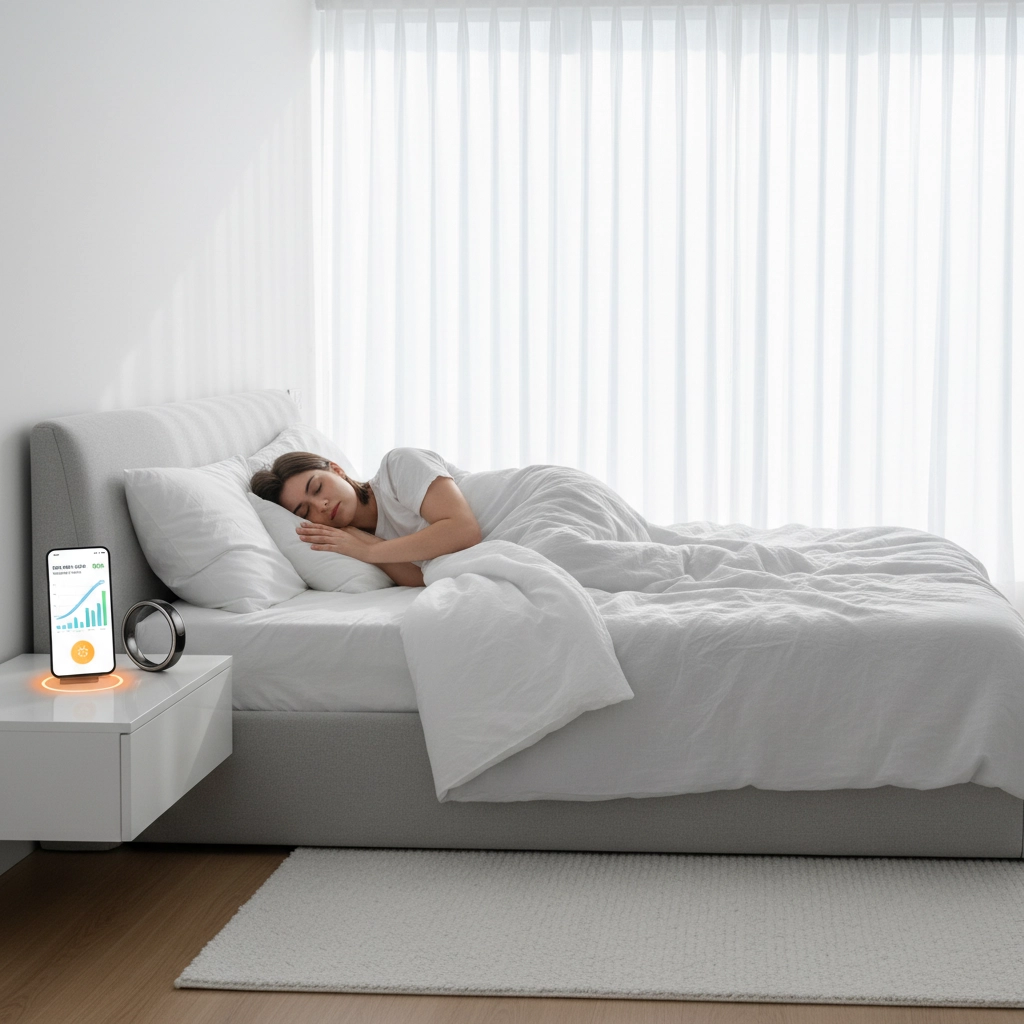Are You Making These 5 Fatal Mistakes with Your AI Fitness Coach? (Smart Ring Users, This Affects You Too)

Your AI fitness coach promised to revolutionize your workouts. Your smart ring tracks every heartbeat, every step, every moment of REM sleep. Yet somehow, you're still not seeing the results you expected. Sound familiar?
Here's the hard truth: most people are sabotaging their own success with AI fitness technology. And if you're wearing a smart ring, these mistakes could be costing you even more than you realize.
Mistake #1: Setting Vague, Unrealistic Goals
The Problem: You told your AI coach you want to "get fit" or "lose weight" without specific metrics, timelines, or context about your current fitness level.
Most AI fitness systems are only as good as the information you feed them. When you input generic goals like "build muscle" or "improve cardio," your AI coach generates equally generic programs. The result? Workouts that fit basic parameters but aren't optimized for your actual needs or lifestyle.
Smart Ring Connection: Your ring is collecting detailed data about your sleep quality, heart rate variability, and recovery patterns, but if you haven't connected this data to specific, measurable goals, your AI coach can't create the personalized programming you're paying for.
The Fix:
- Set SMART goals: "Increase my deadlift by 20 pounds in 8 weeks while maintaining 7+ hours of sleep"
- Connect your smart ring data to your goal timeline
- Review and adjust goals monthly based on your ring's recovery insights

Mistake #2: Ignoring Your Sleep and Recovery Data
The Problem: You're following your AI's workout recommendations without factoring in what your body is actually telling you through your wearable devices.
Smart rings excel at tracking sleep stages, heart rate variability, and recovery metrics. Yet many users treat these insights as interesting data points rather than actionable intelligence. Your AI coach might recommend a high-intensity workout on the same day your ring shows poor sleep quality and low recovery scores.
The Reality Check: A 2025 study showed that users who ignored recovery data from their wearables were 40% more likely to experience overtraining symptoms and 60% more likely to plateau in their fitness progress.
The Fix:
- Set up automatic data sharing between your smart ring and AI coach
- Learn to interpret HRV trends (higher variability typically indicates better recovery)
- Allow your AI coach to modify workout intensity based on sleep and recovery scores
- Take rest days when your ring consistently shows poor recovery metrics
Mistake #3: Skipping Proper Device Calibration and Setup
The Problem: You rushed through the setup process and never properly calibrated your devices to your body's unique patterns.
Smart rings aren't one-size-fits-all accessories. They require precise sizing, proper finger placement, and initial calibration periods to deliver accurate data. Many users treat the sizing kit as optional or wear their ring on the wrong finger, leading to inaccurate readings that mislead their AI coach.
Hidden Costs: Inaccurate data means inaccurate recommendations. Your AI might underestimate your fitness level, overestimate your recovery capacity, or miss important health patterns entirely.
The Fix:
- Use the sizing kit for 24-48 hours before ordering your ring
- Wear your ring on your non-dominant hand's index or middle finger
- Complete the full calibration period (usually 2-4 weeks) before trusting the data
- Regularly clean your ring and check for proper fit as your finger size may change

Mistake #4: Poor Data Privacy and Security Practices
The Problem: You're sharing sensitive health data without understanding how it's being used, stored, or potentially monetized.
Your AI fitness coach and smart ring collect incredibly personal information: your sleep patterns, stress levels, workout intensity, recovery capacity, and sometimes even location data. Many users blindly accept terms of service without understanding that this data might be shared with third parties, used for targeted advertising, or stored indefinitely.
Smart Ring Specific Risks: Ring data is particularly detailed because it's collected 24/7. Unlike a smartwatch you might remove, your ring is constantly monitoring and recording biological signals.
The Fix:
- Read privacy policies for both your AI coach app and ring manufacturer
- Opt out of data sharing when possible
- Use strong, unique passwords for fitness apps
- Regularly review what data you're sharing and with whom
- Consider data privacy settings that give you more control
Mistake #5: Missing Critical Software Updates and Feature Releases
The Problem: You set up your devices months ago and haven't updated the software, missing crucial improvements to AI algorithms and new features that could enhance your results.
AI fitness coaching is rapidly evolving. Updates often include improved algorithms, better integration between devices, enhanced privacy features, and new coaching methodologies. Running outdated software means you're not getting the full value from your investment.
The Cascade Effect: Outdated AI coaches may not properly interpret data from updated smart rings, creating compatibility issues that affect the quality of your personalized recommendations.
The Fix:
- Enable automatic updates for both your ring app and AI coach
- Regularly check for firmware updates on your wearable devices
- Join beta programs if you want early access to new features
- Follow your device manufacturers on social media for update announcements

The Smart Ring Advantage: When Done Right
When you avoid these mistakes, the combination of AI coaching and smart ring technology becomes incredibly powerful. Your ring provides continuous, passive monitoring that feeds your AI coach with rich, contextual data about your body's responses to training, stress, and recovery.
The best results come from viewing these tools as partners in your fitness journey, not magic solutions. Your ring tracks what's happening; your AI coach interprets patterns and suggests adjustments; but you remain the decision-maker who understands your body, schedule, and goals better than any algorithm.
Taking Action Today
Start by auditing your current setup:
- Check your goals: Are they specific, measurable, and connected to your device data?
- Review your device setup: Is your ring properly sized and calibrated?
- Examine your data sharing: Do you know what information you're sharing and why?
- Update everything: When did you last update your apps and firmware?
- Analyze your recovery patterns: Are you using sleep and HRV data to inform your training decisions?
The technology exists to give you personalized, adaptive fitness coaching that was unimaginable just a few years ago. But only if you use it correctly.
Your AI coach and smart ring can be game-changers for your fitness journey: just make sure you're not accidentally sabotaging their effectiveness with these common mistakes. Your future stronger, fitter self will thank you for taking the time to set things up properly.
Ready to optimize your AI-powered fitness setup? Explore our collection of smart wearables and coaching technology designed to work seamlessly together for maximum results.


